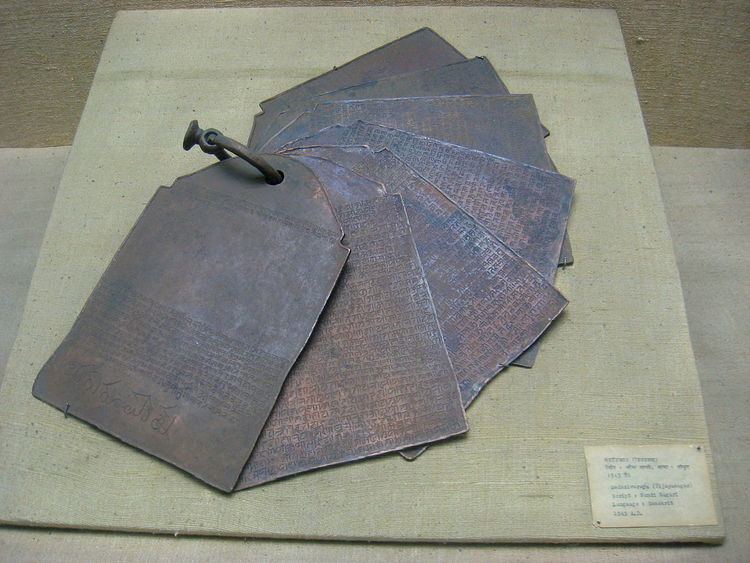Time period c.8th century-present | Sister systems Devanagari | |
 | ||
Parent systems Brahmi alphabetNorthern BrahmiNagariNandinagari Unicode range Unsupported. Link to proposalhttp://www.unicode.org/L2/L2016/16002-nandinagari.pdf | ||
Nandinagari is a Brahmic script derived from Nāgarī script which appeared in the 7th century AD. This script and its variants were used in central Deccan region and south India, and an abundance of Sanskrit manuscripts in Nandinagari have been discovered but remain untransliterated. Some of the discovered manuscripts of Madhvacharya of Dvaita Vedanta school of Hinduism are in Nandinagari script.
Contents
Its sister script is Devanagari, which is common in other parts of India.
Etymology
The etymological origin of the name "Nandinagari" is unclear. The first part of the term "Nandi" is ambiguous in its context. It may mean "sacred" or "auspicious" (cf. Nandi verses in Sanskrit drama). Nandi is the name of Lord Siva's Vrishabhavahana (bull vehicle), a revered icon, and it may be the source of the name.
History
Nandinagari is a Brahmi-based script that was used in southern India between the 8th and 19th centuries AD for producing manuscripts and inscriptions in Sanskrit in south Maharashtra, Karnataka and Andhra Pradesh. It derives from the central group of Nagari scripts and is related to Devanagari. There are also several styles of Nandinagari, considered by scholars as variant forms of the script.
Some of the earliest inscriptions in Nandi nagari have been found in Tamil Nadu. The 8th century Narasimha Pallava's stone inscriptions in Mamallapuram on Tamil Nadu's coast, the 10th century coins from Chola king Rajaraja's period, the Paliyam copper plate inscriptions of the 9th century Ay king Varagunam are all in Nandi nagari script. A Rigveda manuscript has been found written in Nandi nagari script, as well as manuscripts of other Vedas. Manuscripts of the first century BCE Vikramacarita, also known as the "Adventures of Vikrama" or the "Hindu Book of Tales", have been found in Nandinagari script.
In a Travancore temple of Kerala, an Anantasayana Mahatmya palm-leaf manuscript was found, and it is in Nandinagari script.
Nandi Nagari script was used to write Sanskrit language, and many Sanskrit copper plate inscriptions of the Vijayanagar Empire were written in that script.
Numerous Sanskrit manuscripts written in Nandinagari have been discovered in South India, but it is one of the least documented and studied ancient scripts of India. These cover Vedas, philosophy, commentaries on ancient works, mythology, science and arts. These are preserved in the manuscript libraries, particularly those in the southern regions of the country. Some Nandi nagari texts are in biscript that include other major south India language scripts, such as Telugu, Tamil, Malayalam and Kannada scripts.
Comparison to Devanagari
Nandinagari and Devanagari scripts are very close and share many similarities, but they also show systematic differences. Nandinagari differs from Devanagari more in the shape of its vowels, and less in many consonant shapes (some are somewhat different). It has mātra (a headline at the top of the character) but lacks long connecting mātra over words. Nandinagari is thus a sister script of Devanagiri, but not a trivial variation.
The Nandinagari manuscripts also show cosmetic and style differences, such as the use of distinct Anusvaras and method of labeling each hymn or verse.
Nandinagari in Unicode
Within Unicode standards, a block of codes have been tentatively allocated to Nandinagari, but not yet adopted.
